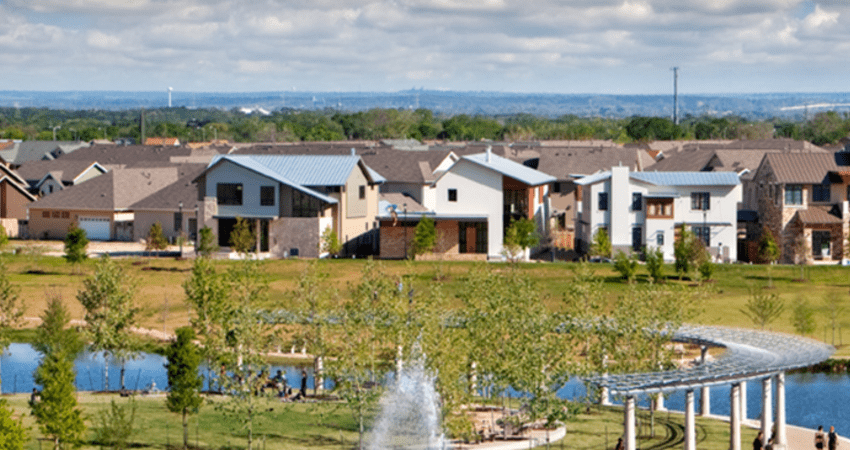
On an Abandoned Texas Airfield, A Mixed-Income Community Takes Off
When Austin, Texas, decided in the late 1990s to move its airport to a larger tract of land, city leaders had a vital question on their hands: How could the city best use the soon-to-be-abandoned 700 acres of prime land just a few miles northeast of downtown?
Hundreds of people, including residents, city officials, architects, and planners, joined in the conversations that would lead to an answer. East Austin, the area of the city containing the land, had not seen new housing starts in years and needed a boost in economic development. The city settled on a plan to build a diverse, sustainable, mixed-income, mixed-use development that would include lots of green space and new jobs in a wide salary range.
A key part of the city’s vision for the space was to offer one quarter of the residential properties at affordable rates.
“The groups that helped put forward the idea for the redevelopment wanted a range of housing prices, community diversity, open space, and economic opportunity,” says Pam Hefner, project manager for Austin’s Economic Development Department.
Called Mueller Austin after the old Robert Mueller Municipal Airport, the new development opened in 2006 and is slated to be completed in 2020. It will be home to about 13,000 people and provide 13,000 jobs and 4 million square feet of office and retail space. Already it includes rental and for-sale homes ranging from affordable to luxurious. Households that make 60 percent of Austin’s median family income can find affordable apartments in the community, and those that make 80 percent of the median income can find affordable for-sale homes.
Austin’s innovative and comprehensive approach to Mueller’s redevelopment has earned the city awards from the ULI Terwilliger Center for Housing and the U.S. Department of Housing and Urban Development. Here are three ingredients that have made income integration a reality at Mueller:
Public/private partnership. The development was built through a partnership between the city and land developer Catellus Development Corporation.They structured their master development agreement in a way that reduced certain costs of development, including financing and the carrying costs of the land.
The financial underpinnings of the agreement were an important part of the equation that ultimately allowed the planners to achieve their social goals, including setting aside affordable housing. To keep a quarter of the homes affordable, the city, the master developer, and the homebuilders agreed to a reduced return on the affordable housing portions of the project.
Interspersed and indistinguishable. The affordable and market-rate homes are indistinguishable from the outside. “Drive down the block and I challenge you to determine which are market rate and which are not,” says Deanne Desjardin, Catellus’s vice president of marketing and communications for Mueller.
Every street has housing at varying price levels, a tactic that may reduce micro-segregation by income in diverse neighborhoods. Though the market-rate homes may have more rooms and different interior features than those offered at lower rates, identical exteriors contribute to the coherence of the community, Desjardin says.
Continued affordability. Often in mixed-income communities, for-sale homes that start off at below-market prices are later sold at market rates, reducing options for the next generation of lower- and middle-income buyers.
To maintain a range of affordability in the community’s owner-occupied homes, Catellus created the Mueller Foundation, a nonprofit corporation that holds second mortgages on all the affordable homeownership units. Purchasers agree to share an increase in equity with the foundation when they sell, limiting their own profit to 2 percent per year of ownership—allowing owners to accrue modest assets while ensuring that the same opportunity remains available in perpetuity. The foundation also has the first right of refusal when owners sell, allowing them to ensure that the next purchaser is also a household in the intended income group.
As housing costs have increased, middle-income buyers have started having a hard time affording homes, Desjardin says. To address that problem, Mueller will begin pricing some homes to be affordable for families making 120 percent or less of Austin’s median family income.
Photo credit: Thomas McConnell Photography


